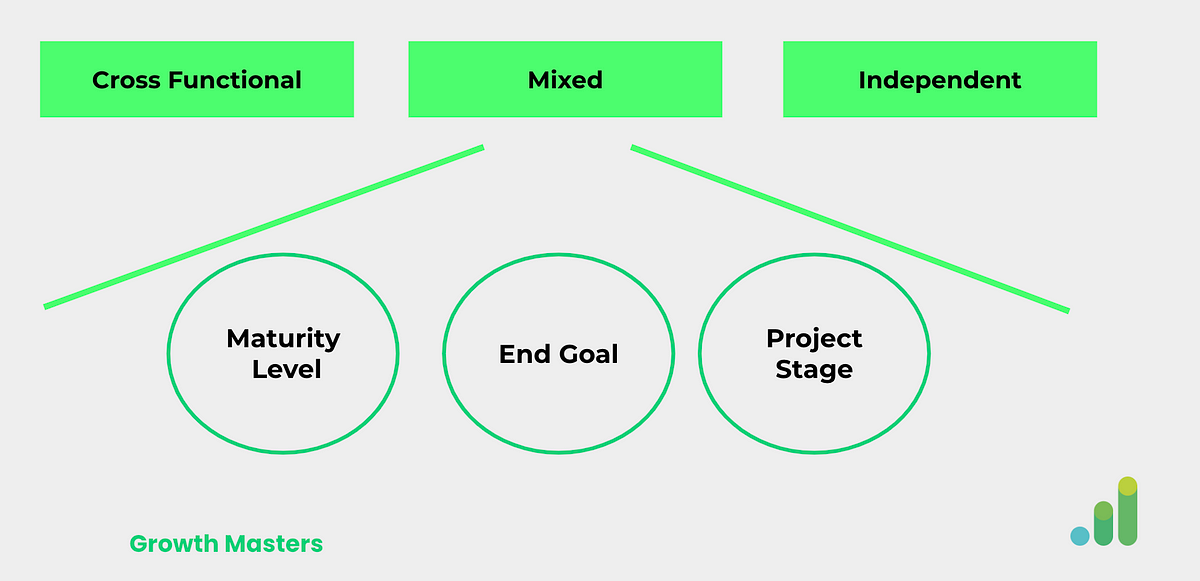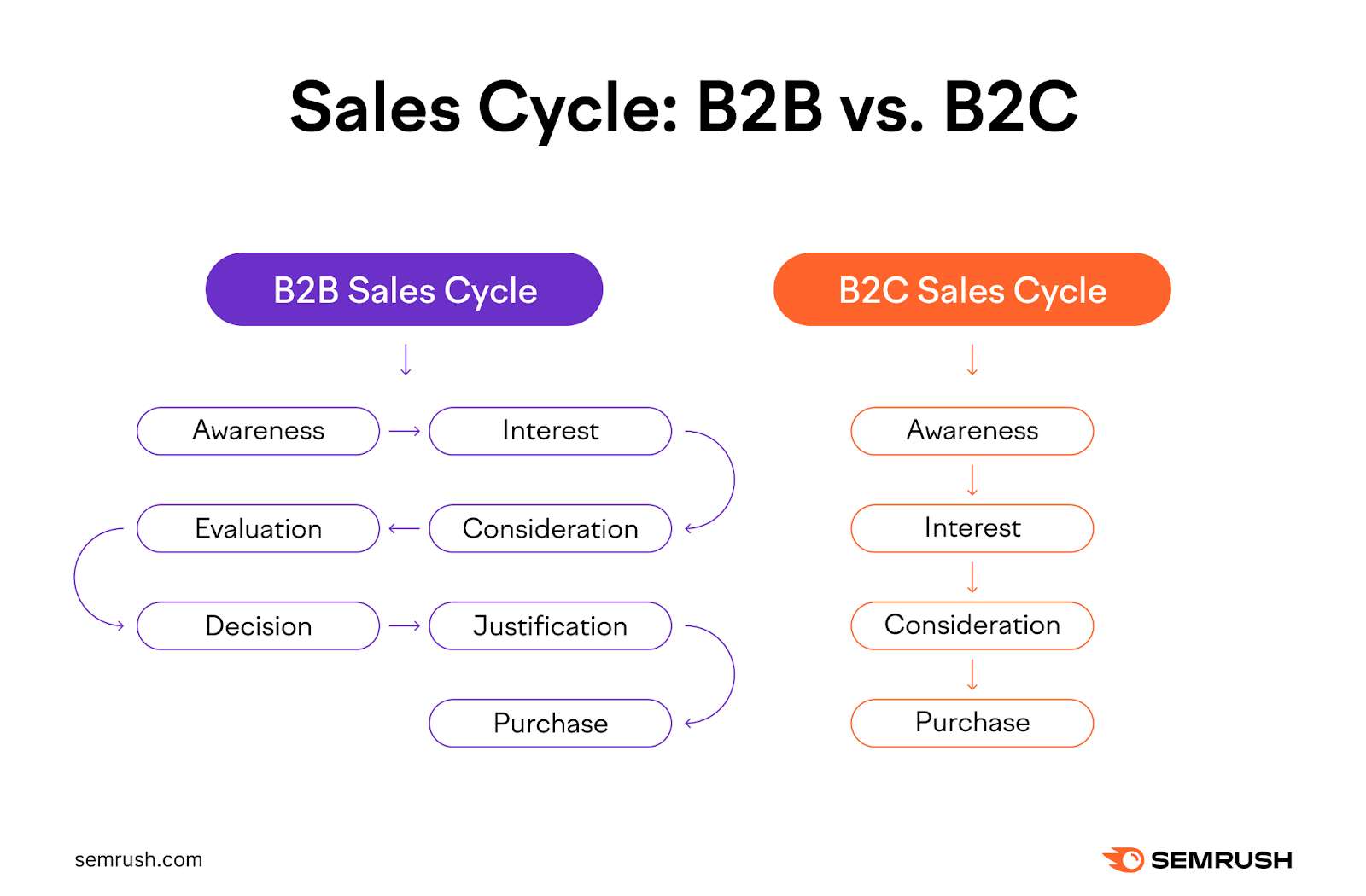
Before we start, let’s all agree on the fact that there are successful growth teams in all possible structures. There’s no right or wrong team structure. There is, however, the most likely to work for your company for that specific moment in time.
The moment in time is a reflection of three main decisions:
- The Stage of the product/project;
The same company can have different projects/products in completely different stages. To answer this, focus only on the project where the growth team will be involved.
a) From zero to MVP (Minimum viable product);
b) From MVP to PMF (Product-market-fit);
c) From PMF to Scale and Traction;
d) Unlock Enterprise Value;
*Here‘s a breakdown of the differences between each - The Purpose or End-goal of the growth team;
a) Optimization;
b) Validation;
c) Innovation; - The Maturity of your company;
In terms of growth culture, from 1–5, which level would you say your company is at? A few questions that can help you define that:
a) Number of experiments a month;
b) The knowledge of the high-level executives in regard to growth;
c) Collaboration with other teams and departments;
d) Data-based decision-making process;
e) Ideation comes from every other team;
f) Growth strategy aligned with Company strategy;
*If you want to find out your maturity level, take this test.
Once you have done the homework to answer the questions above, it’s time to decide on the structure that will help you maximize the chances of success for your growth initiative.
Cross-Functional
When launching a growth initiative in a company, you may face a lack of understanding from other executives and other departments. Growth has a singular dynamic, requires risk-taking, and focuses on learnings. Without support and shared resources, growth teams may create limited insights.
An initial growth team structure should be optimized for company-wide understanding and collaboration, even if that means sacrificing the potential deliveries and reach — at least in the very beginning. After all, there’s no way to get to the top of a mountain without climbing it.
Pro: The cross-functional structure allows the growth team to gather a team of internal early adopters while, at the same time, not disrupting other teams’ resources (people/time/budget). This gives the growth team the range of skillsets required to operate, and penetration to other departments’ knowledge all while spreading the word about its role.
Con: Since members are not exclusively dedicated to growth, the experimentation sprint might not be their top priority. The execution capacity of both sides (growth and the other department) may be compromised — or, at least, not maximized.
Either way, this structure helps to demystify some of the early misconceptions other members usually have about growth and it’s a great opportunity to get others on your side.
Recommendation: having at least one team member fully dedicated to growth creates ownership and helps ensuring the process will remain in a continuous and permanent manner.
Mixed Structure
Once you get a better understanding from members of other areas in all hierarchical levels of what they can expect from growth and how they can collaborate, it’s time to expand.
At this point, you should be receiving collaboration from other areas, like suggestions for testing ideas or data points to backup tests. You also have more freedom to execute experiments, take more risks and fail (learn). As well as increasing the reach across the board, reaching more growth levers beside the ones where you started.
Pro: the growth leader will ensure the process and the projects are not deprioritized. This person can build cross-department bridges, ensure that the growth strategy is well aligned with the company strategy as well as play one of the most important roles at this stage: promote the wins.
Cons: without full understanding and comprehension, there may still be some counter-resistance in terms of resource allocation from other departments. It’s important to align bandwidth and time allocation and guarantee there won’t be surprises along the way.
Recommendation: as Nicholas Garofalo, one of the growth leaders at Automattic uses to say: “the most underrated skill of a growth leader is: cheerleading”. Don’t forget to promote your wins (and all learnings) as much as you can, not only for your direct reports, but also for the benefit of other leaders.
Independent
At this point, growth is already considered part of the company culture. Experimentation, risk-taking, and hypothesis validation became part of the daily routine. Testing everything out and making decisions based on data is part of the DNA.
With a VP of growth sitting side by side with other VPs, growth is now institutionalized. You already have a well-documented process, you are executing dozens of experiments per week. Your teams have their own management tool where you follow all experiments and connect results to learnings. Team members have no other KPIs to deliver besides the ones attached to the growth process.
Pros: that’s the stage where growth achieves its optimal operational capacity — which usually means the execution of the largest amount of experiments possible, at least a thousand or more per year. You can clearly recognize that incrementing the number of experiments makes the growth needle move up, for the entire business.
Cons: if the growth leaders don’t have strong relationship skills with other executives, growth might become siloed and the impact it brings company-wide may suffer. Ideally, growth will be focusing wherever the biggest opportunity is at the moment. However, without access to all departments’ insights and data, this may not happen.
Recommendation: whenever possible, at this stage, prioritize promoting internally over hiring externally for the growth team. It may take some time for new hires to become fully integrated, learn how to navigate company policies and procedures as well as understand who are the decision makers from other departments and what’s key for their success — which can influence how fast they start contributing to impactful experiments.
Keeping your learning board updated or finding an automated solution for collaboration at this point is paramount. The growth team tends to have a faster turnover than any other department, so speeding up new members’ onboarding can save you a huge amount of time.


![How to Create a Winning Social Media Marketing Strategy [Free Template]](https://static.semrush.com/blog/uploads/media/94/04/9404d69596303391b679c0febe3bd93d/5ede0a3d323ac876f2aa51a018703bcf/winning-social-media-marketing-strategy-sm.png)
